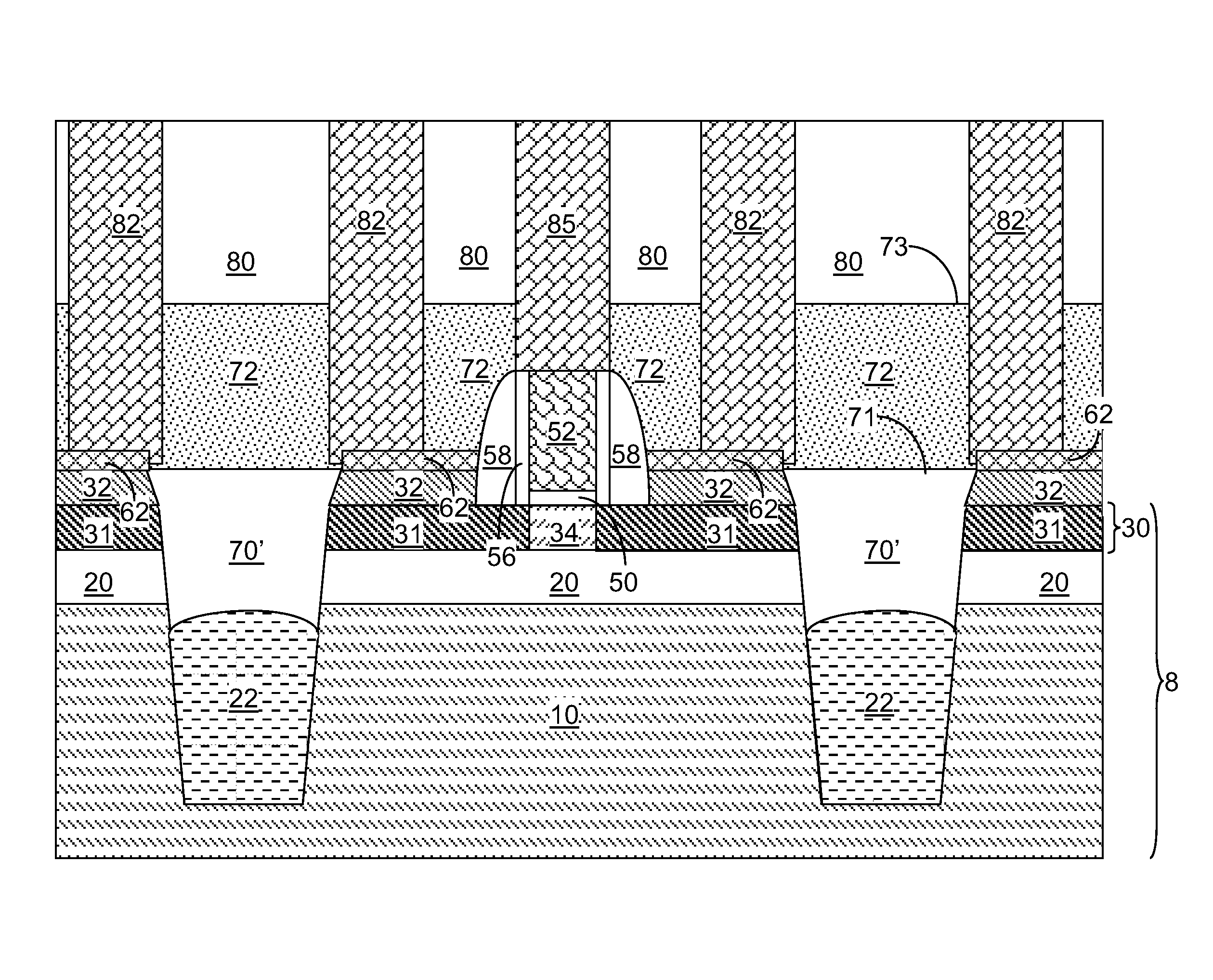Borderless contact for ultra-thin body devices
a contact structure and ultra-thin body technology, applied in the field of semiconductoroninsulator (etsoi) devices with borderless contact, can solve the problems of inability to meet the requirements of high-speed communication, and the leakage current is unacceptabl
- Summary
- Abstract
- Description
- Claims
- Application Information
AI Technical Summary
Benefits of technology
Problems solved by technology
Method used
Image
Examples
first embodiment
[0026]Referring to FIG. 1, a first exemplary semiconductor structure according to the present disclosure includes gate-level layers formed on a semiconductor substrate 8. The substrate 8 can be a semiconductor-on-insulator (SOI) substrate including a vertical stack of a handle substrate 10, a buried insulator layer 20, and a top semiconductor layer 30. The handle substrate 10 can include a semiconductor material, a dielectric material, a conductive material, or a combination thereof. For example, the handle substrate 10 can be a single crystalline silicon substrate. The buried insulator layer 20 includes a dielectric material such as silicon oxide, silicon nitride, silicon oxynitride, or a combination thereof. The top semiconductor layer 30 includes a semiconductor material such as silicon, germanium, a silicon-germanium alloy, a III-V compound semiconductor, a II-VI compound semiconductor, any other semiconductor material known in the art, or combinations thereof. The semiconductor...
second embodiment
[0058]Referring to FIG. 9, a second exemplary semiconductor structure according to the present disclosure can be derived from the first exemplary semiconductor structure of FIG. 3 by depositing a first dielectric layer 170. The first dielectric layer 170 is a dielectric material layer including a first dielectric material. The first dielectric layer 170 can be a conformal dielectric layer that can be deposited, for example, by chemical vapor deposition (CVD).
[0059]The first dielectric layer 170 is deposited directly on the top surface of the shallow trench isolation structures 22 and various top surfaces of components of the semiconductor device. For example, the first dielectric layer 170 can be deposited directly on source / drain metal semiconductor alloy regions 62, the gate spacers 58, and the gate cap dielectric 57 of a field effect transistor. In one embodiment, if the top surface of the shallow trench isolation structures 22 are recessed below the top surface of the handle sub...
PUM
 Login to View More
Login to View More Abstract
Description
Claims
Application Information
 Login to View More
Login to View More - R&D
- Intellectual Property
- Life Sciences
- Materials
- Tech Scout
- Unparalleled Data Quality
- Higher Quality Content
- 60% Fewer Hallucinations
Browse by: Latest US Patents, China's latest patents, Technical Efficacy Thesaurus, Application Domain, Technology Topic, Popular Technical Reports.
© 2025 PatSnap. All rights reserved.Legal|Privacy policy|Modern Slavery Act Transparency Statement|Sitemap|About US| Contact US: help@patsnap.com



